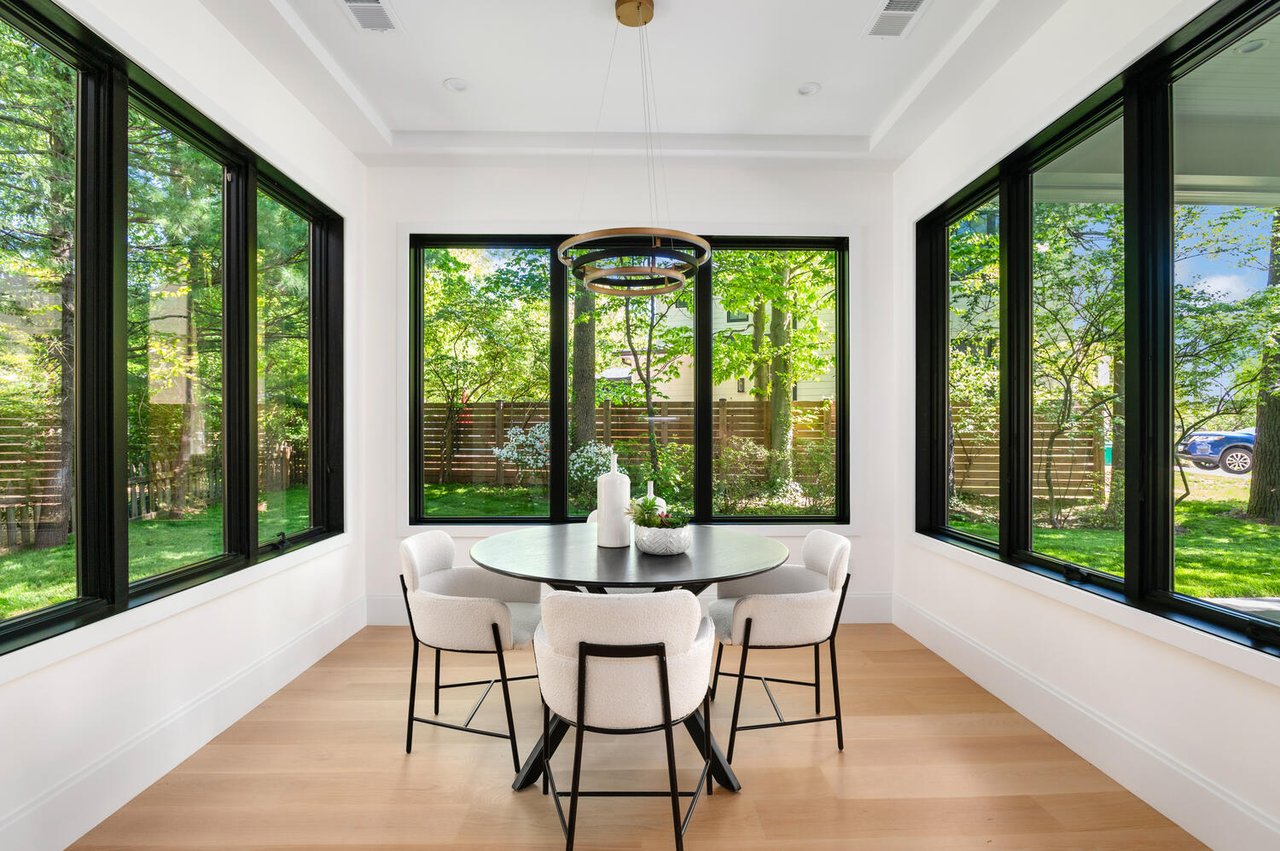Fishing for Hot Investments in A Cool Market
Wydler Brothers

Wydler Brothers

Written by: Hans & Steve Wydler
Read the article on Washington Post.
As the frenzied local real estate market appears to be cooling down, we are being asked a lot whether real estate is still a good investment.
As real estate agents, we tell our clients that it can be, but the risk of making a poor investment is increasing because prices are high and there’s no guarantee that returns will justify those prices. Now more than ever, an investor must understand the fundamentals and remember that evaluating an investment property is like peeling an onion: There are many layers, and if you do it wrong, you’ll cry.
Your first step in evaluating a potential real estate investment should be to determine whether it fits your portfolio and financial plan. People tend to be at one extreme or the other: Either they have no real estate exposure or they are overexposed. A well-diversified portfolio should include some real estate, but not all real estate.
The next issue to consider is what type of real estate investment makes the most sense for you. There are many choices — raw land, office buildings, warehouses, gas stations, apartment buildings, condominiums, real estate investment trusts, private syndications, etc. Each comes with its own risks, rewards and management challenges. But because many investors start with residential real estate, we will focus on residential real estate investments that generate rental income.
Realistically evaluating the finances of the individual property you are considering is the key to figuring out what might be a hot investment, even in a cooling market.
Understanding Leverage
One feature of real estate as an investment is that it is so easily leveraged. That means you can use borrowed money to increase the return on your capital. Investors can put in a relatively small amount of cash, perhaps 5 percent to 20 percent of the purchase price, and borrow the rest.
In a market that appreciates rapidly, as happened locally over recent years, investors have been able to achieve extraordinary returns on their capital, sometimes doubling their investment in a year or two. For example, consider the impact of leverage on a homeowner who bought a house with 10 percent down, kept it for two years, and then sold it for 20 percent more than he paid, after expenses. His return on invested capital wasn’t 20 percent; it was 200 percent. That is, if the investor put $10,000 down on a $100,000 property and sold it for $120,000, the $10,000 would have tripled to $30,000 after paying off the $90,000 mortgage.
However, returns like that aren’t guaranteed, and leverage can magnify losses. Using that same simple example, if the property sold for just $80,000, the $20,000 bath the investor would take isn’t a 20 percent loss on the $10,000 investment. The entire investment would be lost, and the investor would have to pay another $10,000.
In contrast, with most unleveraged investments, you won’t go in the hole: If you buy $1,000 in stock, you won’t lose more than $1,000.
So how do you evaluate the odds on your real estate investment? It takes some math.
Building a Financial Model
To illustrate, here’s an analysis of a hypothetical real estate investment.
Let’s assume you want to own a small, multifamily rental property and find the following listing: “Four-unit apartment building in NW D.C. Strong rental history. Great potential for condo conversion. Charming building in historic neighborhood.”
The seller is asking $1 million. He provides the following financial information. (All revenue and expense numbers are annual, from 2005.)
· Gross annual rent: $90,000
· Utilities: $10,000
· Repairs and maintenance: $2,000
· Insurance: $3,000
· Taxes: $6,000
That means the property brings in $90,000 a year in rent, and expenses are $21,000. That means revenue minus expenses, known as net operating income, is $69,000.
Is this property a good investment? Let’s take a look.
First, as with any investment, you must determine a way to evaluate the rough attractiveness of the investment before proceeding. For instance, in the stock market, many investors use the price-to-earnings ratio, or P/E. In real estate, investors often use the property’s capitalization or “cap rate.” This, too, measures how the price of a property relates to its earnings stream. The cap rate is calculated by dividing the net operating income by the purchase price. Because it is calculated without factoring in financing costs, the cap rate shows you the rate of return you would expect if you bought the property with all cash.
In this hypothetical example, if you relied only on the information provided by the seller, it would appear that this property’s cap rate is 6.9 percent. In Washington, 6.9 percent is currently considered a good return for this type of property, though cap rates fluctuate over time. (An investor who will accept a lower cap rate will be willing to pay more for a property than one who insists on a higher return on the investment.) Historically, 6.9 percent is on the low side, but more on the implications shortly.
Remember that the seller’s information is only a starting point. Your next task is to develop your assumptions and build your own financial model. Here are some basic due-diligence questions to consider.
· Are the rental income projections realistic? Check newspaper and Internet ads and visit similarly priced rental units. Ask to review existing lease agreements. Make sure that you can get the rents the seller is saying you can expect. Are there opportunities to raise rents? Are any rent-control laws in place?
· Are the operating costs realistic? Make sure the seller’s list is comprehensive and accurate (utilities, repairs, maintenance, property management, insurance, trash, pest control, advertising, supplies, cleaning, etc.). Verify estimates with third parties whenever possible. Get the utility bills directly from the utility companies; call your own insurance company; check the tax records. As a general rule of thumb, you should reserve 10 percent of your revenue for repairs and maintenance.
· Are there any deferred maintenance items that need attention? When was the roof installed? How old are the building’s major systems? How old are the kitchens and appliances? Often, these items are neglected in investment properties and can significantly add to the cost. You should also budget an annual capital reserve for unexpected items (depending on the property and the age of the components). Your lender may have a specific requirement, so check. Even if not required, you should build in a reserve of at least 4 percent of your revenue.
· Is there an allowance for a property manager? Even if you plan to manage the property, you should budget a management fee to compensate yourself for your time, in case you later decide to pay a management company and because if you ever sell, the buyer will account for that cost in his model. Lenders will factor in a management fee, usually between 6 percent and 8 percent of revenue for a small residential property.
· Are there reserves for vacancies? A lender in this market will typically factor in a 5 percent vacancy rate in a stable neighborhood.
Now you’re ready to build your financial model. To keep things simple, we will build the model for only the first year. Typically, such calculations extend for three to five years.
Let’s say that, to be conservative, you have assumed zero appreciation in the building’s value. Also, you believe the seller’s rent projections are accurate and there are no major deferred capital expenditures. However, you did note that there were no allowances for vacancy, capital reserves or a property manager, and you thought the reserve for repairs and maintenance was too low. So:
· Gross annual rent: $90,000
Vacancy allowance: $4,500 (5 percent)
Property manager: $5,400 (6 percent)
Utilities: $10,000
Insurance: $3,000
Repairs and maintenance: $9,000 (10 percent)
Capital reserve: $3,600 (4 percent)
Taxes: $6,000
Using these more realistic expense figures, the property’s net operating income would be $48,500 — a big difference from the $69,000 you would have taken in under the more optimistic scenario.
With these changes, the projected financial performance has deteriorated significantly. The cap rate has dropped to 4.85 percent from the 6.9 percent suggested by the seller’s math. Now, this property does not look as promising, but your analysis is still not complete.
Assess Your Risks
Next you must evaluate your financing options. How much leverage will the property bear, and what are the available terms of that debt?
Let’s assume you are planning to put down 20 percent and finance the rest, and that you would like to break even on a cash-flow basis — meaning you want the property to bring in enough profit to cover your financing costs. Given that you expect the property to generate $48,500, your only option is to try to secure an interest-only loan charging about 6 percent (6 percent times $800,000 is $48,000). In this mortgage market, that means that you would most likely be limited to a short-term adjustable-rate mortgage, thereby exposing yourself to interest rate risk later when the interest rate adjusts.
More troubling is that you have no margin for error. If your expenses are higher than projected, or your rental income drops, you will start bleeding cash.
Now, here’s the scary part. Let’s say your projections are off and your property’s net operating income is only $40,000. That means you’re paying $8,000 a year after debt service. You want to sell. However, based on a 4.85 percent cap rate, you would get about only $825,000 (i.e. net operating income divided by cap rate). After paying your closing costs, you are unlikely to be able to repay the full amount of your debt.
That’s right: A few faulty assumptions about a property’s operating performance could result in not only losing your entire investment but also having to bring additional cash to the table just to get out of the deal. Ouch!
Consider what would happen if five years from now, the going cap rate for these kinds of investment properties reverts toward its historical average and is at 8 percent. In other words, investors insist on paying a price that would result in an 8 percent return, rather than the lower return investors appear willing to accept today. Assuming no change in your net operating income over the intervening period, the property value would have plummeted to $500,000. Big Ouch!
Other Sources of Value
As scary as the above scenario is, this property still could be a good investment, but only if you can identify other sources of value. If you can, you should make assumptions about their impact on your investment and build that information into your financial model.
Generally, these sources of value fall into four groups: improvements, additional revenue opportunities, local catalysts and systemic shifts in the marketplace.
· Improvements include changes as simple as adding a new coat of paint or more involved projects such as a complete renovation. These changes should enable you to charge higher rents and get more money when you sell the property.
· Investors frequently overlook additional revenue opportunities . For example, perhaps you can add coin-operated laundry machines, charge for parking or sell advertising space on the side of the building. Alternatively, maybe you can change the building’s use — when permitted by local zoning laws — making it a more profitable endeavor. Indeed, many local investors have made fortunes in the last several years by converting small rental apartment buildings into condominiums and selling them.
In the aforementioned case, if you believe you could sell each unit for $400,000 as a condominium, then you would have $600,000 (four times $400,000 is $1.6 million, less the $1 million you paid for the property) to cover renovations, transfer, conversion and carrying costs and — we hope — profit.
· Local catalysts are changes in the area that could increase (or decrease) the value of the underlying property faster than the general market. For example, is a new Metro station opening or new commercial development coming to the area? On the flip side, is a major employer leaving? If so, that could decrease your property’s value. Shrewd investors often start by identifying these positive catalysts and then limiting their search to nearby properties.
For instance, just in the District, there are extensive plans for new commercial development in Columbia Heights and near the Friendship Heights Metro station. And of course, the proposed new baseball stadium in Southeast has attracted flocks of real estate investors big and small who are betting that a stadium will be a positive local catalyst.
· Systemic shifts change the entire investment landscape in a city or nationwide. These shifts are sometimes obvious, with predictable consequences. For instance, the 1968 D.C. riots devastated neighborhoods and left commercial corridors traumatized for decades. More often, these shifts are somewhat obscure and their impact understood only in hindsight. If you can see a shift coming and understand its impact before the market does, you may be able to profit.
Recent examples of such systemic shifts include changes to the tax code. For example, the Tax Reform Act of 1986 contributed significantly to the decline of the real estate market in the late 1980s by making real estate a less desirable investment. Almost a decade later, the Taxpayer Relief Act of 1997 had the reverse effect and arguably has been one of the key drivers of the current real estate boom. That law enabled a single homeowner to exempt $250,000 in capital gains from the sale of a principal residence under certain conditions ($500,000 for married couples). The homeowner could theoretically repeat the process every two years, creating a strong incentive for individuals to speculate in the housing market.
Keep in mind there are other factors to consider when evaluating an investment property that are beyond the scope of this article. They include property condition, leases and contracts, title, zoning, rent-control laws, tenants’ rights, tax implications, capital gains treatments, deferred depreciation expense and recapture rules, closing costs, historical and environmental easements. There are experts out there — lawyers, lenders, accountants and real estate agents — who may be able to help determine the right choice for you in this uncertain investing environment.
Stay up to date on the latest real estate trends.

Compass Corporate has released their 2026 Market Outlook, and a handful of insights stood out as especially telling. Here is what caught our attention.

Valuing and negotiating a home can feel a lot like blackjack. You need skill, instinct, and some luck—and the stakes are real.

We attended The 100 in Franklin, TN—an exclusive network of Compass’s top 100 agents nationwide—where we connected with peers and leadership representing over $30B in … Read more

October Market Update and the Year of the Crazy Ivan

After a summer of sweating through showings and pretending humidity is a glow, we’re savoring the cooler mornings, the first hints of gold in the trees, backpacks reap… Read more

It’s early August, but we think the market may be showing signs of … April vibes!

This Spring we were hoping our local real estate market would bloom. Instead, it pivoted.

Real Estate in a Shifting Economy

"Everything changes and nothing remains still; and you cannot step twice into the same stream." - Heraclitus, Greek Philosopher
Wydler Brothers have been selling residential real estate for over 20 years in the DC metro area. Along the way, they’ve achieved numerous awards and recognitions, including being recognized as “The Most Innovative Real Estate Agent in America” (Inman, 2014), written several articles for The Washington Post, authored a book, “Inside the Sell”, co-founded a real estate tech company which sold to Move, Inc. in 2013, and built Wydler Brothers into a highly respected boutique brokerage with 70 agents and employees which they sold to Compass in 2019. Currently, Wydler Brothers is among the top 3 teams in the DMV and was the #1 Compass Team in 2022.